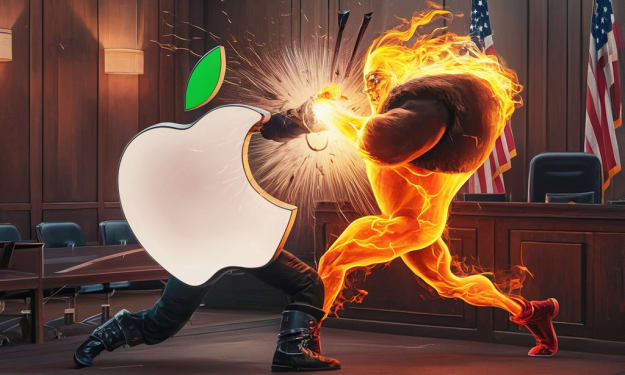There are five key elements to a good campaign
The methodology of Internet operation master

From today, we will enter the part of activity operation, which is divided into two classes. This class will be more basic and focus on five elements to ensure the successful completion of an activity. The next class is the advanced class.
Compared with content operation and user operation, activity operation is more explosive and needs to improve certain indicators in the short term, such as the number of users, transaction volume, brand reputation and so on.
In the long-term operation process of activities, I found that as long as you grasp the five elements of activities, an activity will be in the expected effect.
These five elements are activity purpose, activity rhythm, gimmick & interest points, gameplay, and resource integration. Let's break them down.
① Purpose of the activity
Every activity has a priority purpose. Don't want it all. The purpose of the activity is to serve the current operational strategy. I remember that one year, the big strategy of Tmall was to improve the fashion degree. This seemingly empty goal fell to Tmall Clothing, which was to increase the price of customers through a series of activities. Note that there is no mention of brand favorability, transaction volume, conversion rate and other indicators, but fall on the single indicator of customer price.
Because this is the most positively related indicator to fashion, if consumers buy clothes of international first-line brands on Tmall, the price of customers will naturally go up, the platform will naturally appear more fashionable, and more fashion brands will enter one after another.
Therefore, the activities during that period were not the promotion of well-known Tao brands, but the selection of international famous brands, fashion brands and high-end goods. Instead of forcing merchants to discount, the activities were presented through star platforms, full limited gifts, and fashion bloggers to provide content. In this way, the current customer unit price will increase, as for whether the sales rise, is not the current goal we are most concerned about.
If there are many goals, it is easy for the operations staff to feel overwhelmed in the process and end up with none of them.
② Rhythm of activity
Senior operations staff have a sense of rhythm, which is part of the art of operations.
The rhythm of activity is usually divided into: publicity period (not necessary), warm-up period, formal period, end period. Each stage has articles to do, have their own responsibilities, not just a process.
Build-up period: usually two weeks to a month before the official period begins. During this period, the focus of the work is to release the PR draft to reveal some highlights of the event, and the complete preview will be placed in the next stage. However, companies without such a big appeal usually remove or weaken this stage. After all, the Internet world is too full of information, and users will not be so long with you.
Warm-up period: usually 3-5 days before the formal period. During this period, the focus of the work is to publicize the highlights and interest points of the activity, which are manifested in the e-commerce website as exposure of the activity commodities, playing games, raffle, coupon, collection and shopping cart, etc. The more significant the event, the more energy will be amplified in the warm-up period.
Formal period: usually 1-3 days. The focus of the work during this period is transformation. For the e-commerce website is to do a good job of selection, to ensure the smooth shopping process, the flow of the maximum extent into sales. For offline activities of brand communication, the main purpose during this period is to let the on-site experience exceed expectations, and let users "turn to fans" and spread spontaneously.
End stage: Never stop at the formal stage, guys! Make sure you finish on a good note. The significance of the epilogue can not be ignored. Internally, it is a summary of the review and draw experience. External is to announce the successful end of the activities, packaging activities throughout the highlights, explosive point, do a beautiful public relations. The end of Tmall Double 11 is very good. It is full of external sound and highlights, and the station will make use of the remaining traffic for encore promotion.
③ Gimmicks & points of interest
After talking about the rhythm of the activity, let's talk about the gimmicks and benefits of the activity. Gimmicks and benefits are a natural pair, always go hand in hand. This is the same as the usual theme of the activity, but divided into gimmicks and interest points two words mainly want to remind you, the theme of the activity must be "carrot and stick".
Gimmick: IT IS SOFT THAT PART, THE ACTIVITY THAT GIVES ONESELF LOOKS FOR THE EXCUSE THAT ATTRACTS EYEBALL. For example, festivals (e.g., Valentine's Day), anniversaries (e.g., anniversaries), milestones (e.g., 1 million registered users), hot events (e.g., the World Cup), etc.
Benefit point: is the hard part, the user can enjoy the benefits. For example, discount, cash back, two people go together one person free order, increase user rights and so on.
"Carrot and stick" this is also the golden rule of banner, we see the e-commerce website of the banner is basically a combination of the two, gimmicks + interest points + popular figure is the guarantee of the banner click rate. What are the gimmicks and benefits of the following two banners?
Loading in...
Loading in...
④ Activity play
Gameplay is the link between gimmicks and points of interest, as well as the amplifiers of activity. Good gameplay should be new, fun and simple to operate. Activity play is not to let you get benefits for nothing, but to do a fun and interesting thing to give you.
For example, the common ways are red envelope rain, fission red envelope, collection of five blessings, collection of stories, post photos, forwarding lottery, collection of likes and so on... The principle is not to give coupons and red envelopes to users, but only after they participate in an interaction. This result will stimulate participants to share and spread, and greatly mobilize the enthusiasm of users. It is also easier to spend the coupons and red envelopes that users get for their efforts. If you pay attention to it, you will find that a lot of games will be prepared and presented one by one during the warm-up period of Double 11, which will make users feel fresh and interesting and have interest stimulation, and will be forwarded to friends or groups to invite friends to play.
⑤ Resource integration
Activities with the previous several elements, basically formed, but sometimes their own resources are scarce, feel always short of something. Maybe it is the lack of an attractive prize, maybe it is the lack of a good idea, maybe it is the lack of a perfect venue, maybe it is the lack of some content to enrich the activity, the most common is the lack of target groups to reach. At this time, the need for activity operations to do resource integration. You have to use their strongest in exchange for the strongest of others, strong strong union.
The startups I've worked with have mostly traded ideas and content for users. For example, "Owner" APP, the first startup I joined after leaving Ali, is an e-commerce platform for artisans' handicrafts. After angel Wheel, what I need is not money, but fast and accurate user acquisition.
Our user is colloquially those who have money and leisure have taste have experience, have requirements for the quality of life, this part of the people in the whole netizen account for the proportion is very small and scattered, so spread advertising is not feasible. We find it difficult to pick out these people online, but they do form certain groups offline, such as teahouses, tea fairs, cultural and creative fairs, design weeks, high-end real estate, high-end shopping malls, bank VIP customers, MBA and so on.
So in the beginning we did a lot of offline activities, and most of them were free. How did we do that? We play the role of "craftsman broker", packaging craftsman's works, craftsman's stories, craftsman's on-site display and so on into a good activity proposal to BD each other's venues and users.
A lot of high-end venues/communities want to serve their users with tonal activities, but it's too much trouble for them to find and hire a craftsman themselves, rather than work with a craftsman broker like us.
It's a win-win situation for both sides. We are responsible for inviting craftsmen and planning activities, while the other party is responsible for venue layout and inviting their users. After contacting our craftsmen and works, a large proportion of these offline users will be converted into our users.
If an activity has done the above 5 elements, it is basically a good activity. But if we want to fully derive nutrients from each activity, we also need to do activity review. The completed project can be re-interpreted from six parts: activity background, activity objective, process review, activity data, experience summary and follow-up plan, so as to obtain a deeper understanding of the matter.
Second, summary and promotion
All right, that's it for today. Next time you plan an event, don't forget to pay special attention to the five elements of the event. That is, activity purpose, activity rhythm, gimmick & interest points, gameplay, resource integration. And at the end of the activity, through the review to gain growth.





Comments
There are no comments for this story
Be the first to respond and start the conversation.